The ancient Nabataean city of Petra holds many secrets. Historians are just beginning to uncover the story behind this amazing city. We here at Nabataea.net believe that in time Petra will become known as more than just a ‘pretty place’ with impressive ruins. Hopefully people will soon realize the breadth and depth of the wonders of this special place. If you are interested in specific details, you can find them throughout nabataea.net. The menu at the left of this page will help you navigate the more than thirty web pages that we have specifically designated for this fantastic city. If you start at the top of the menu, you can move through the city, starting from the parking lot outside of Petra Park. There are some places where you can take side paths, but don’t get side-tracked from the main menu… and then of course there are hundreds of other pages on this site about the ancient Nabataean people who built Petra, as well as the amazing merchant empire that impacted much of the world from China to Rome. For a quick overview of the Nabataean people click here.
The Number of Tombs
There are over one thousand burial monuments in Petra and several hundred others in the other burial cities. Many of these were for family and tribal units. Thus the tombs could have contained tens of thousands of people. Added to this, there are extensive Nabataean graveyards located near Petra and the other cities where the more common people were buried. This adds up to a lot of graves.The Nabataean wealthy were mostly buried in five Nabataean burial cities. There were three cities in the Sinai/Negev, one in the inner kingdom (Petra) and one in Saudi Arabia. These cities are also important cities, in that they were located at the junctions of major trade routes.
Therefore, it appears that the Nabataean dead were transported to these cities for proper burial. Most likely there was something in Nabataean culture or religion that encouraged people to think of them spending eternity along side of their family and relatives.
The Builders of the Tombs
From the inscriptions we see that the tombs were made by Nabataean sculptors and not by imported slaves or laborers.
A City of Tombs
Was Petra originally a religious city, or was it an urban center for the Nabataeans. That probably depends on when you are talking about. It appears that originally it was more like a religious city. It functioned as the center for the twice-yearly pilgrimages and festivals, and it also functioned as a burial city. It was complete with several temples, a festival theater, a nymphaeum, a bathhouse, a sacred way, a monumental gate, many pools, and several other public buildings. The temples and other public buildings occupied the central valley, where the Royal Tombs were situated.
Along with this, the people who maintained Petra had to live there. This included priests, sculptors, grave diggers, temple attendants, administrative staff for the many public buildings, merchants who sold temple and burial paraphernalia, and other support people who ran services that provided things like food and water. If there was a royal court in Petra, then this would have entailed another whole group of people. These people alone may have numbered several thousand, along with their spouses and families.
Some writers have estimated that Petra might have had a population of 20,000 to 30,000 inhabitants. Interestingly enough, few academic sources substantiate these figures. (originally derived by a journalist). There was a limited amount of room within Petra’s city walls. If we calculated, say, 10 people to a household, this would come to at least 2000 large houses. The problem with this is that there was very little room within the city proper for private housing. The great majority all of the buildings uncovered to date have been public buildings. As an example, consider the market places. For years, part of Petra was deemed as having upper, middle, and lower marketplaces. When archaeologists decided to excavate the lower market in 1998, they discovered a series of public pools, gardens, and waterworks.
Most archeologists, however, now believe that Petra was a large, urban center. The Petra Scrolls clearly tell us of the crowded living conditions within the city during the Byzantine era, but little is known of Petra during its purely Nabataean days from around 60 BC to 200 AD.
As the Nabataeans were a nomadic people who traditionally lived in tents, it is assumed that for the first several hundred years of their occupation of the Inner Kingdom that they lived in tents, and did not erect stone houses. This is true in most of the Nabataean cities. It is only during the latter part of the Nabataean kingdom that suddenly the Nabataeans began constructing houses, and then they were often of incredible size, varying from 600 to 2000 square meters.
So, did people live in cities surrounded by the dead? The answer is not clear, but it may have been that most of the Nabataeans lived in tents scattered across the countryside, or in small centers such as Selah. Many also lived in smaller villages raising camels and horses. This would have required large tracts of grazing space. Others would be away with the caravans or trading ships.
So it only makes sense that they would cluster their public buildings around one spot, where the temples and Royal Courts and tombs were located. As for housing, perhaps for many years, and particularly during public festivals, the majority of people lived in tents.
You can learn more about the Nabataeans by purchasing the book: The Nabataeans, Builders of Petra. Proceeds from the sale of this book go towards supporting this website.









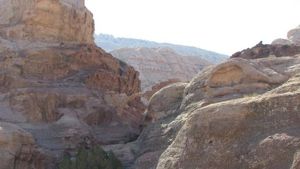








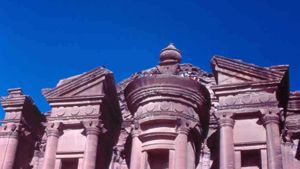
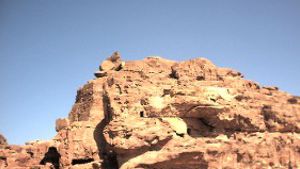






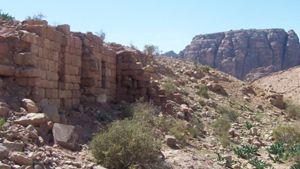



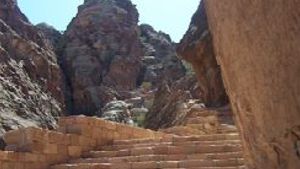

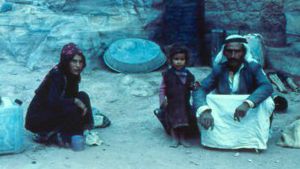
Page Discussion
Membership is required to comment. Membership is free of charge and available to everyone over the age of 16. Just click SignUp, or make a comment below. You will need a user name and a password. The system will automatically send a code to your email address. It should arrive in a few minutes. Enter the code, and you are finished.
Members who post adverts or use inappropriate language or make disrespectful comments will have their membership removed and be barred from the site. By becoming a member you agree to our Terms of Use and our Privacy, Cookies & Ad Policies. Remember that we will never, under any circumstances, sell or give your email address or private information to anyone unless required by law. Please keep your comments on topic. Thanks!